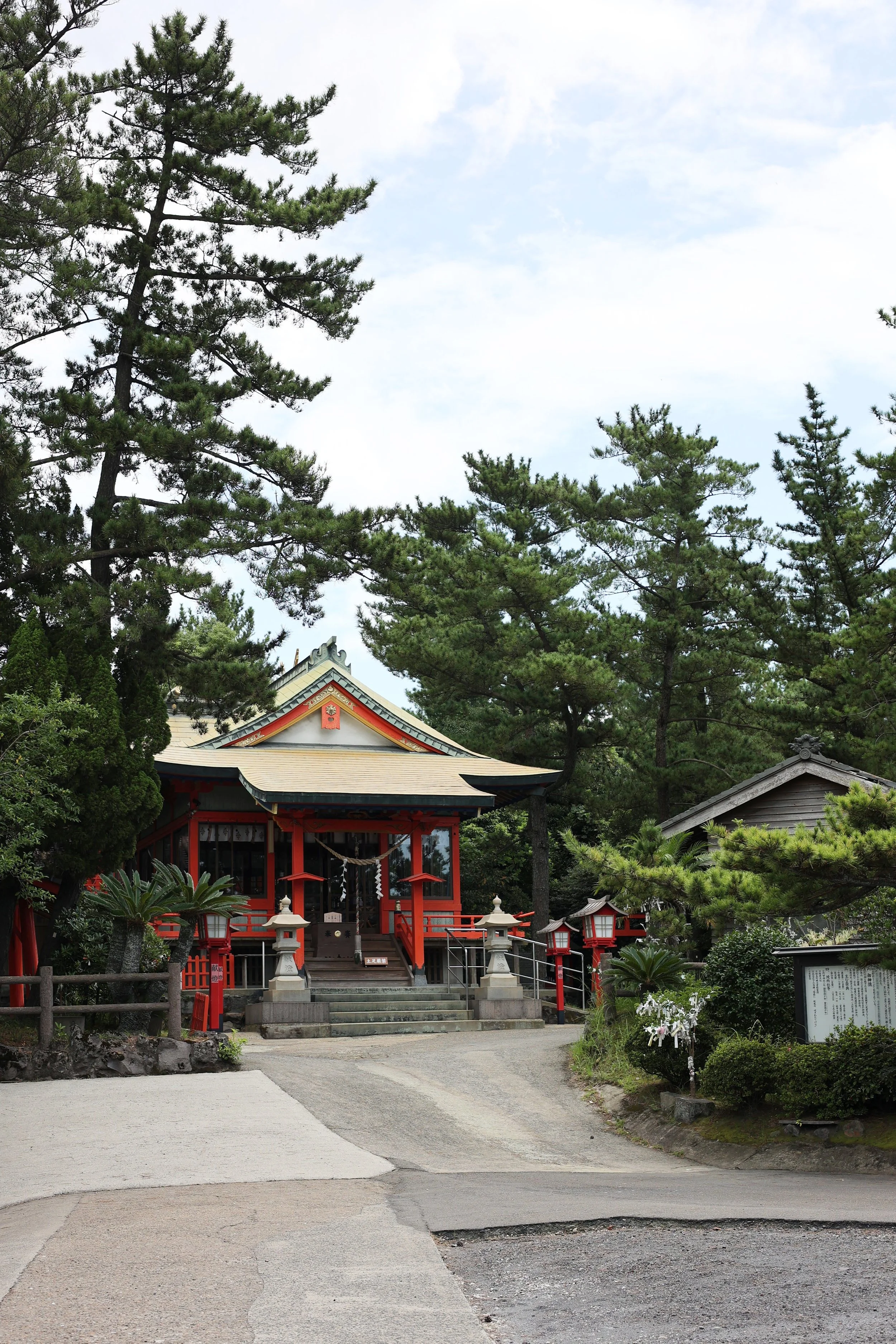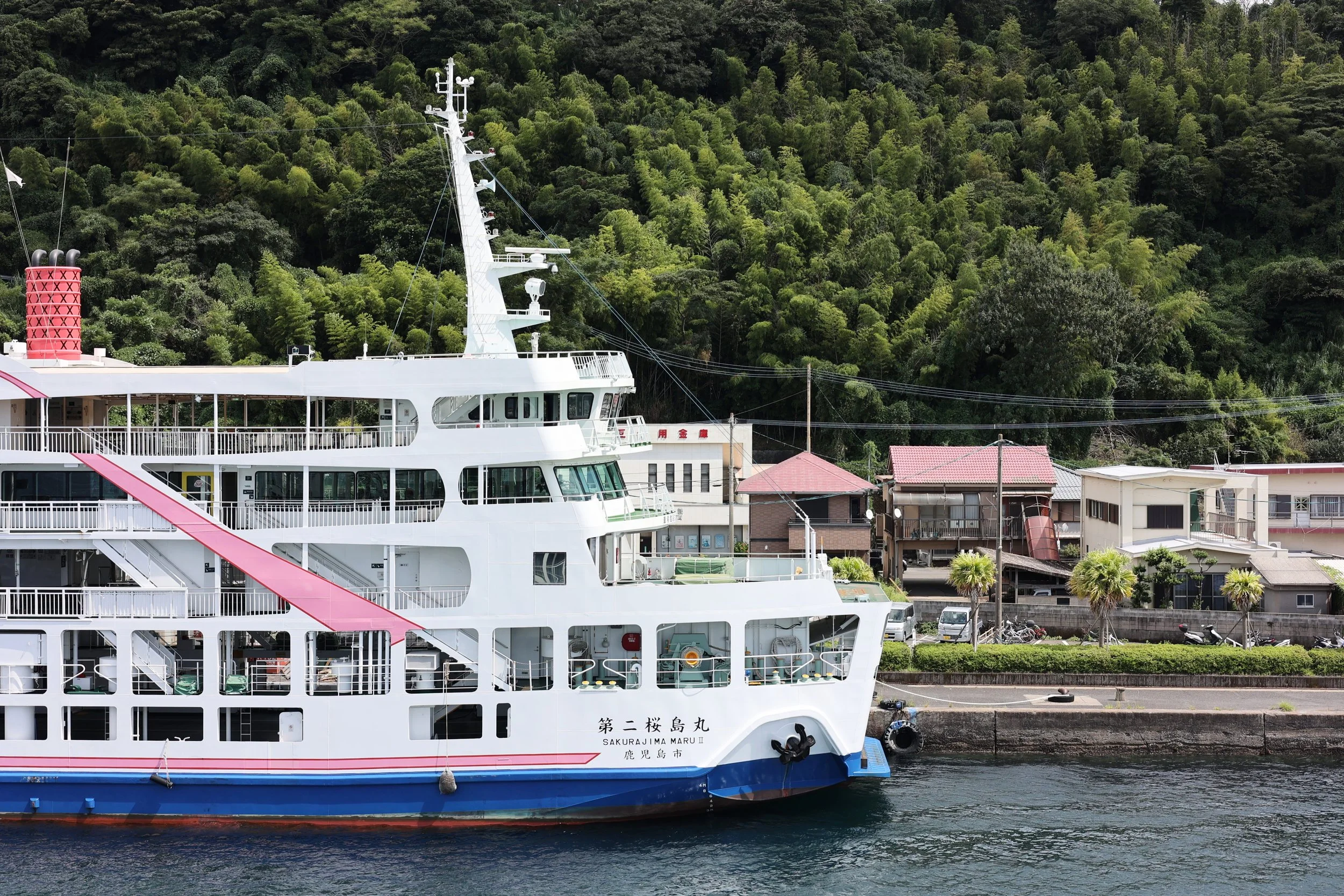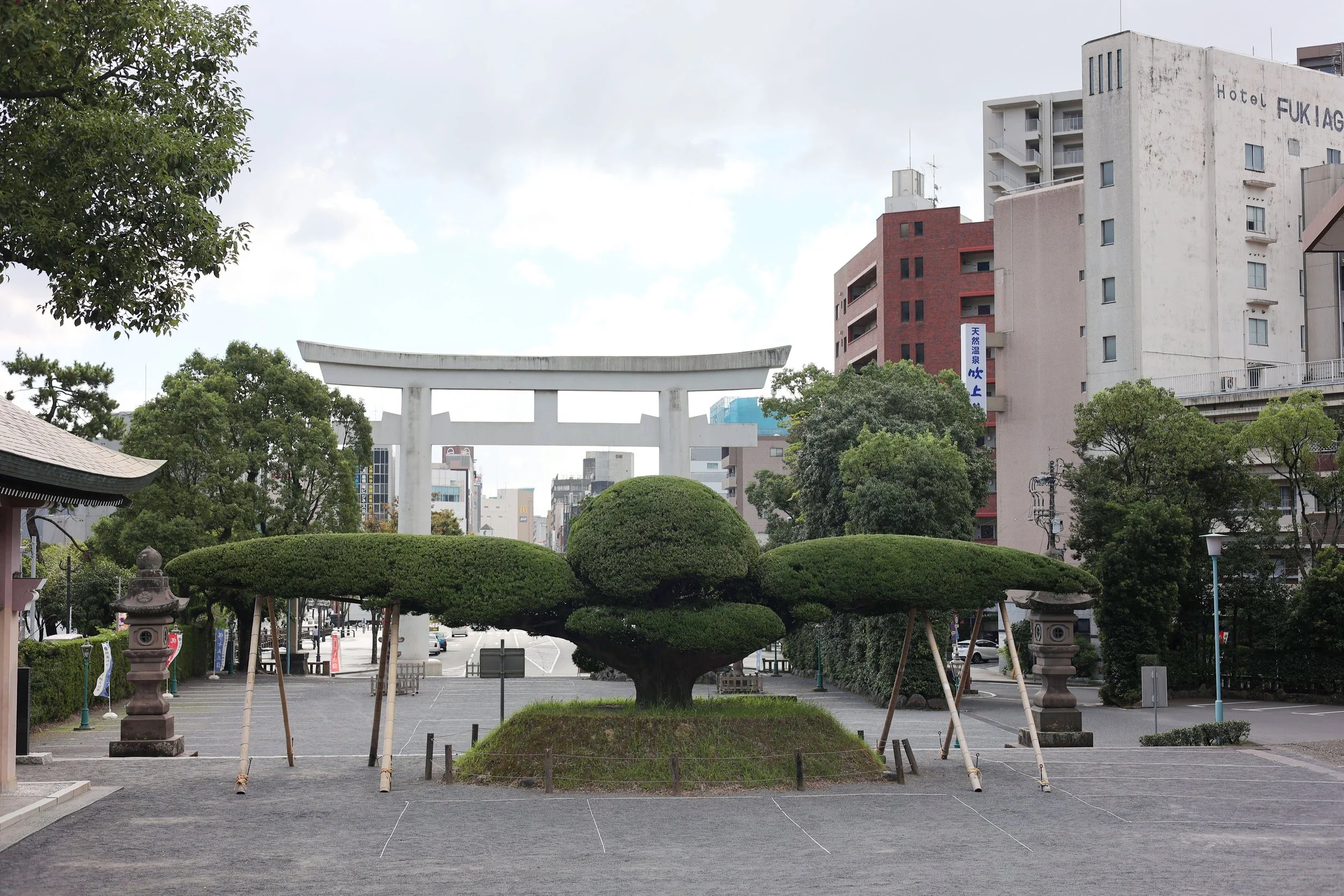Kagoshima: Kurobuta (aka Black Pork)
/Another episode of almost missing our flight: we arrived at the check-in counter exactly one minute before closing, and rushed to the gate just in time to start boarding! Phew!
During the pandemic, Kagoshima was one of the “safest” regions in Japan, having only turned into a “red zone” once according to the map provided to us by the US military in Japan. We haven’t had a chance to visit Kagoshima due to the lack of direct flight from Okinawa. To get there, we flew into Fukuoka, ate there of course, then hopped on the Shinkansen headed for Kagoshima.
Accomodation
Remm Kagoshima
Conveniently located at the center of Downtown Kagoshima, minutes walk away from major attractions and restaurants. Nearby is Don Quijote, convenient stores, and coffee shops. The pro is this place is less than 4,000 yen a night; the con is the living spaces is small, but the bathroom is nearly the same size as the living spaces.
Day One
***Pro tip: purchase discount Shinkansen tickets from Daikokuya! Our friends A&W gave up this tip, and we saved thousands of yen for our Shinkansen tickets from Hakata to Kagoshima. You should be able to find Daikokuya near any major train station. Alternatively, you can easily find discounted train tickets at other “Ticket Shops” around train stations, they offer similar prices compared to Daikokuya.***
Maruichi: super oiishi kurobuta tonkatsu! There would be long lines before the pandemic. The fragrance of crispy tonkatsu permeated the entire restaurant, even spilling over into the hallway leading up to it. The friendly owner Yoshiaki-San greets you personally and teaches you the proper way to enjoy his tonkatsu. Smear some mustard on the tonkatsu, and drench it with his special tonkatsu sauce, and you can even put this sauce on salad! The owner speaks very good English, and once he learned that we were from Taiwan, he told us two years ago he hosted a tonkatsu workshop at a Shin Kong Mitsukoshi in Taiwan teaching how to make tonkatsu. Note: huge portions! Come with an empty stomach!
Day Two
Akashiya: Akashiya’s advertisement at the airport is very simple, but the picture of their white rice cake is hard to miss. I knew from first sight my sweet tooth wouldn’t be able to resist. I was correct, it tastes exactly as I remembered. The texture resembles Champion Cake from Tainan, doesn’t stick to your teeth, and brings back memories of my childhood snack.
Sakurajima: the most iconic sight of Kagoshima. From Kagoshima Port to Sakurajima Port costs only 200 yen each way, no advance reservation needed. There are tour buses on Sakurajima (1200 yen), but they stopped running due to the pandemic. Sakurajima is a live volcano, you can see the smoke coming off the summit. In addition to the daily weather forecast, here they also give you the volcanic ash forecast. You can see locals sweeping volcanic ash on the street in front of their house and in their yard, and putting them in designated trash bags. Getting around Sakurajima can be done on bikes, rental is 300 yen an hour. The bike rental shop owner is very honest, tried his hardest to dissuade us from renting bikes, told us that there’s a huge portion that is uphill and would take at least 5 hours to circle the whole island. But I had faith in our athleticism (where did I get the confidence?), and the owner finally rented us the bikes. Another couple saw us renting bikes, and rented also, and biked the same route as us. TBH, biking on Sakurajima was not that difficult (would you agree, UN?), but the whole time there’s volcanic ash falling onto your face. If you use a face wipe, you will see that the wipe turns black. We didn’t have time to circle the whole island, but the scenery along the way is very beautiful!
Karen: I’m usually not a huge fan of pork, and I rarely cook pork at home. The only time I order pork is probably when I get shabu shabu. But in Kagoshima, we had pork every meal. Compared to Okainwa’s Agu pork, Kagoshima’s kurobuta is much more tender, melts in your mouth, and does not taste gamey. Karen is now ranked in our top 3 shabu shabu restaurants in Japan. We couldn’t help but keep ordering more meat. In addition to kurobuta, they also serve kuro-ushi, mouth-watering wagyu grade beef. Kuro means black in Japanese. It is said that the cattle and poultry here get their dark color from ingesting the Sakurajima volcanic ash that fell on their feeds.
Tontoru: This ramen is prepared with fried scallion and minced meat, tastes more like Taiwanese noodles! It is here that we met and befriended two Taiwanese who live in Japan!
Day Three
Serendipitous friendship with our new Taiwanese friends led us to meeting up the next day and sightsee together. Thank God for meeting them, because our original sightseeing plan was thwarted by the closure of many places due to COVID. One of the new friends, Ms. R, is a licensed tour guide! Along the way, she taught us Japanese customs and culture, and I gained so much knowledge! So glad to have met these new friends!
Terukuni Shrine: I learned that when offering your prayer at a Japanese shrine, toss 5 yen into the donation box, because in Japanese, 5 yen sounds like “forming a relationship” with god. A Shinto shrine usually has a place not accessible by the general public, and has a mirror that represents the Shinto deity housed at the shrine.
Shiroyama Park Observation Deck: here you can get a picture-perfect view of Sakurajima with its smoke. Be careful of the steep trek up to the observation deck.
Tsurumaru Castle Ruins: finished renovation in 2020.
Tokunagaya: My favorite is satsuma-imo flavored fish cake and also the one with the Shimazu family emblem. In addition to kurobuta and kuro-ushi, Satsuma-imo is another Kagoshima delicacy.
Ichiniisan Shabu Shabu: Go up to the second floor! Don’t wait on the first floor and get into the wrong restaurant like us, lol. Recommended by locals as well as our travel book! Sprinkle some of their specialty yuzu pepper to enhance the taste!
Starbuck Kagoshima Sengan-en Shop: housed in a historical mining office building from the Meiji period, belonging to the Shimazu Clan. Sip and enjoy a cup of coffee at this space that connects the present and the past, the East and the West. You can also get a glimpse of Sakurajima from the second floor lounge.
Kurobuta: My stomach is growling as I’m writing this, thinking back on the Kagoshima kurobuta. This restaurant also serves kurobuta tonkatsu, and it’s actually black! The texture and taste slightly differs from regular tonkatsu. There are three condiments to choose from: tonkatsu sauce, miso sauce, and Yukushima salt. Grateful for our two new friends for taking us around!
Day Four
Before leaving Kagoshima, we went back to Akashiya to buy more white rice cake and other sweets. Makes me really want to go back to Taiwan now!
Miyama: Our last meal in Kagoshima is at this chicken restaurant. The grilling plate is made from lava. The chicken doesn’t have to be fully cooked. Although it's not the first time eating rare chicken, I'm still not used to the idea.
Due to time constraints, I didn't have the chance to visit Yukushima and Southern Kyushu. I hope to return and hike Yukushima, and of course continue my tonkatsu food crawl. Next post: Nikko!
Shimazu Clan Mon | 島津家家徽
Kagoshima Port | 鹿兒島港
Sakura-jima | 櫻島
Akashiya | 明石屋
Sakurajima | 櫻島
Sakurajima | 櫻島
Tsukiyomi Shrine on Sakurajima | 櫻島月讀神社
Free foot bath rest on Sakurajima | 櫻島免費足湯
Sakurajima Ferry | 櫻島渡船
Sakurajima | 櫻島
Karen | 華蓮
Tontoru | 豚とる
Kurobuta | 黑福多
遊食豚彩いちにさん | Ichinisan Shabu Shabu
Tokunagaya | 徳永屋
Tokunagaya | 徳永屋
Shiroyama Park Observation Deck | 城山公園展望台
Terukuni Shrine | 照國神社
Shiroyama Park Observation Deck | 城山公園展望台
Tsurumaru Castle Ruins | 鶴丸城跡
Terukuni Shrine | 照國神社
Maruichi | 丸一
Miyama | みやま
Maruichi | 丸一
遊食豚彩いちにさん | Ichinisan Shabu Shabu
Starbuck Kagoshima Sengan-en Shop | 星巴克鹿兒島仙巌園店
Sakurajima | 櫻島
鹿兒島港 | Kagoshima Port
Chinese Translation
差點趕不上飛機的故事又多一則!我們在航空公司把Check-in機器關起來前一分鍾到,順利check in,到登機門時直接登機!呼!
疫情期間,鹿兒島一直是日本‘最安全’的地區,也是我們還未踏上的縣市。美軍地圖裡鮮少變成紅色地帶,但也因為飛機班次少而無法直達。從沖繩直飛福岡(我們的最愛),坐新幹線到鹿兒島,非常方便,也從福岡吃到鹿兒島!
住宿清單
Remm Kagoshima
位在鹿兒島鬧區,走路就能到達大部分的景點和餐廳,附近有有唐吉軻德、便利商店、咖啡店,非常方便。一晚不到四千日幣的這種好康旅館,房間空間雖然小,但廁所卻和房間一樣大。
第一天
從福岡博多車站坐新幹線到鹿兒島中央車站,車票是好友A&W教的日本旅行小技巧:車站附近通常有大黑屋,那裡能買到優惠的車票。***查了一下,大部分車站附近有許多“金卷商店”,招牌寫著チケット(門票 ticket),在博多車站裡也有販賣車票的攤販,和大黑屋一樣都有很棒的優惠。***
丸一:好吃的炸黑豬排!聽說疫情前可要排隊超久才能吃到的,我們當然要趁日本還未開放觀光前快點來吃!店裡濃濃豬排味 ,親切的老闆(武良章 Yoshiaki San)還親自教我們怎麼吃炸豬排,沾黃芥末醬,豪不客氣淋上特製醬料,連生菜都要淋!老闆英文超好,和我們聊天,一知道我們是台灣人,開始分享兩年前在台灣新光三越的美食展表演炸豬排,住台灣也太幸福了吧!切記,份量超大,記得空肚來!
第二天
明石屋:明石屋在機場的廣告非常簡約,海報上很像白糖糕立刻引起我的注意力,直覺告訴我那甜點很好吃!果然沒錯,就是我思念已久的白糖糕的味道。口感類似台南狀元糕,糕狀但帶點米味,但不黏牙,很像我在台灣的兒時甜點。
櫻島:鹿兒島最具代表性的景點之一!從鹿兒島港到櫻島港坐船到櫻島一趟200日幣,無需提前訂票,島上也有觀光巴士(約1200日幣),但疫情期間停駛。櫻島是一座活火山,可以看到火山頭有冒煙,更特別的是鹿兒島除了天氣預報,這裡還有火山灰預報。路上也看得到住戶們清理家門口的火山灰,裝進特別火山灰的袋子。我們在櫻島以腳踏車代步(一小時300日幣),但腳踏車老闆非常誠實,租腳踏車時一直阻止我們騎腳踏車,說有很陡的上坡,還以繞整個島需要至少5小時的理由努力說服我們。當我們準備打退堂鼓時,我莫名的自信深信我們的體力一定能騎到我們想去的景點。腳踏車老闆只好面有難堪的把腳踏車租給我們(一對日本情侶看到我們租腳踏車,也跟著租了,還和我們騎一樣的路線呢!)老實說櫻島騎車不算難(UN你覺得呢?),但一路上被火山灰弄的灰頭土臉,用濕紙巾擦臉,每張都是灰。由於時間關係,我們沒法繞整個島,但一路景色不錯!
華蓮:我一直不太愛吃豬肉,家裡也極少煮豬肉(吃火鍋除外),在外更不會特別主動點與豬相關食物。但在鹿兒島,我們餐餐有豬。比起沖繩阿古豬,鹿兒島豬(kuro-buta)肉質更嫩,瞬間在嘴裡融化,也沒有擾人的豬腥味。這天,吃了榮登我們心目中日本刷刷鍋店前三名名,黑豚和黑牛入口即化的肉質讓我們一直追加肉。據說這裡的豬和牛和他們的食物因為長期被櫻島火山灰覆蓋,而成為黑豚和黑牛。
Tontoru拉麵:這拉麵好有有台灣味!油蔥酥和肉燥,這不是台灣麵攤標準配料嗎?飯後我們遇到兩位住在日本的台灣人R&Y!
第三天
要不是前晚認識的兩位台灣人這天帶我們一起出遊,我們原計畫因疫情關係都沒開。更棒的是朋友R有導遊執照,一路介紹日本傳統習俗,學了好多,真幸運能認識大家!
照國神社: 原來在日本神社投錢時,以數字五(5 yen)做結尾意思是與神結緣。神社裡通常不能讓一般民眾進去的地方,有一面鏡子代表神,下次去神社一定會注意這些小細節。 http://www.terukunijinja.jp/
城山公園展望台: 展望台能看到櫻島,還能看到火山冒出來的煙,但到展望台路上有一段滿陡的上坡。
鶴丸城跡:2020年剛修建好的城跡。
徳永屋:我最喜歡薩摩芋口味,和島津家家徽的魚板。 忘了一題,鹿兒島除了黑豚黑牛有名,薩摩芋也是必吃食物。
遊食豚彩いちにさん:別像我們一樣傻傻的在一樓等,直接往二樓走,哈哈哈!當地人推薦,旅遊書也有介紹!好喜歡店裡的獨家柚子胡椒。
星巴克鹿兒島仙巌園店:這是第三家星巴克利用世界遺產與咖啡結合,門口有島津家家徽,店裡裝潢使用當地鹿兒島木材,二樓能看到櫻島和仙巖園。
黑福多:寫著寫著,我開始肚子餓了,想念能天天吃鹿兒島黑豚。這家有黑色炸豬排,味道和口感和一般炸豬排非常不一樣。有三種醬料:豬排醬、味噌、屋久島鹽。感謝兩位新認識的朋友們這一整天帶我們玩!
第四天
離開鹿兒島前,我們又去了一趟明石屋買白糖糕和其他想吃的甜點。他們的甜點真的好讓我想念台灣!
Miyama:午餐我們來這家雞料理店,烤盤是鹿兒島的熔岩燒製而成。這裡的燒烤雞肉不需烤全熟。雖然不是第一次吃半熟雞肉,但還是不太習慣。
這次時間太短,沒機會去到屋久島和南九州一帶,期待下次去屋久島爬山,當然還要繼續吃豬排。下一篇,日光!








































